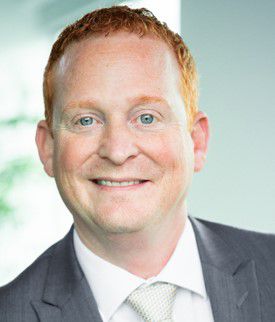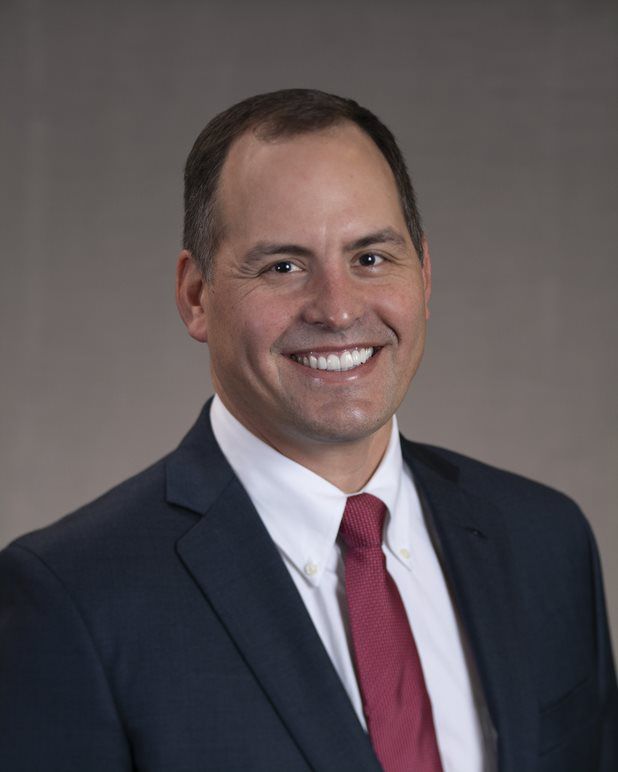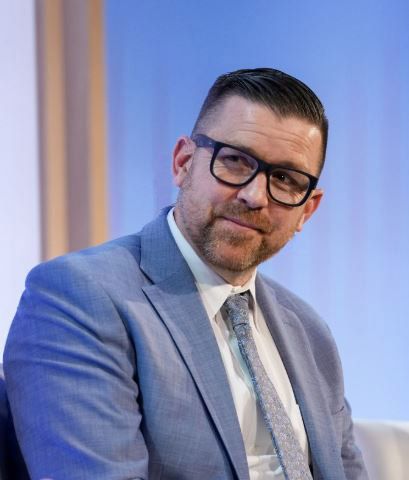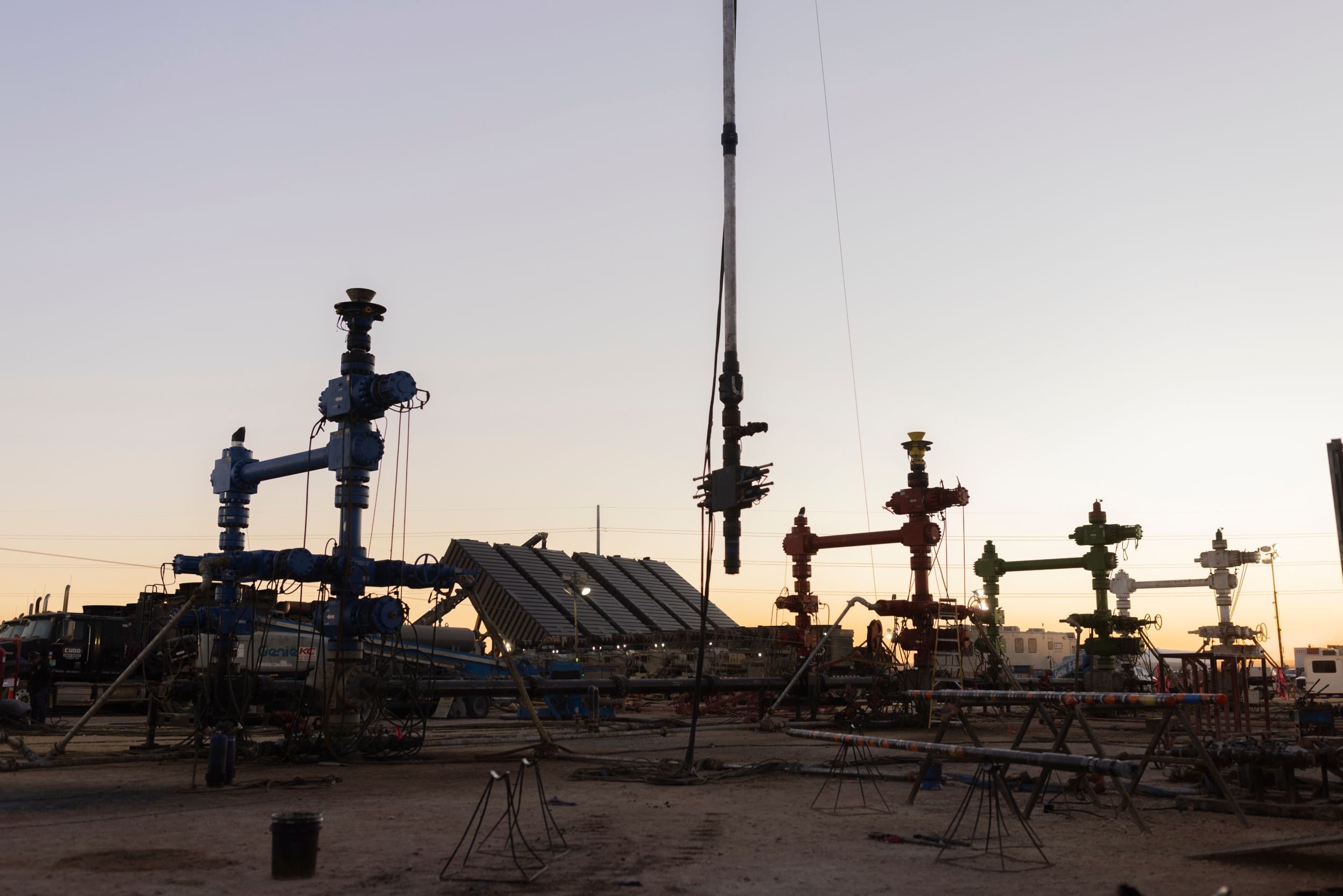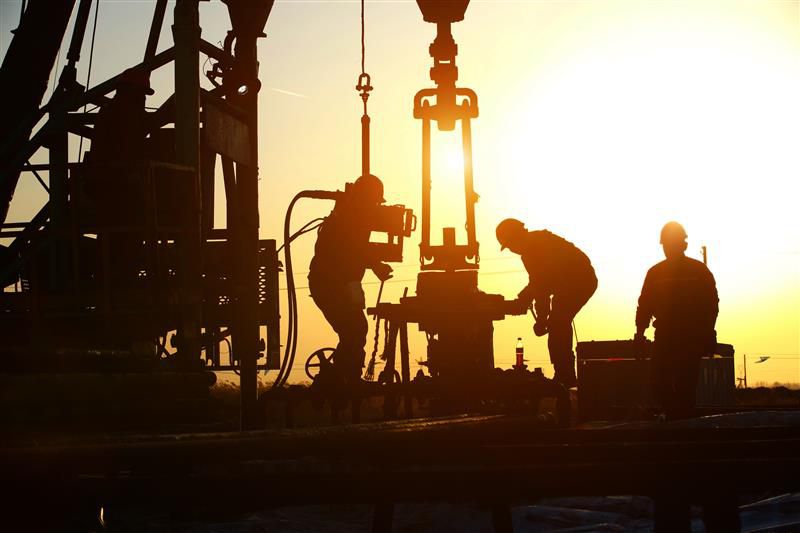00:00:02 Bill Austin
This episode of the Energy Pipeline is sponsored by Caterpillar. Oil and gas.
00:00:08 Jason Kaiser
Since the 1930s, Caterpillar has manufactured engines for drilling, production, well service and gas compression.
00:00:16 Bill Austin
With more than 2100 dealer locations worldwide, Caterpillar offers customers a dedicated support team to assist with their premier power solutions. Oil and gas production is the union of natural systems with advanced science and complex engineering. Smart people across the globe create this remarkable place we call Upstream. And each day brings a new challenge. This is the Oil and Gas Upstream podcast where we look at how these systems come together and learn from the people who make it happen. Okay, everyone. Well, we're gonna get, we're gonna get started here. We're gonna get. Keep on track with all of the observation deck panels. We've really enjoyed this so far. Thank you everyone for, for showing up here. So today we've got a very good group. We've got the team from Caterpillar, Jason, John and Derek from Caterpillar. We're going to talk about a lot of different things. I'm Bill Austin from Daniel Energy Partners. And so we should have a really good conversation. Look, if there, if anyone's got questions or comments in the audience, please, I think we'd love to have some of them too, but we'll just get right into it. So I'm going to guess I'm going to go. Jason, we're going to go right down the line with you first. So Caterpillar began the year with its centennial. So how does this milestone embody your commitment to the oil and gas industry and the energy sector overall?
00:01:49 Jason Kaiser
Yeah, it's been a really fun start to the year with the centennial. We've got some gear in our booth, if you noticed, if you've been there, started celebrating. It's just a really great, exciting thing to think about, the legacy of 100 years of caterpillar. So we're trying to, to take full advantage of that, celebrate that, think about the legacy of the company and all of the people that came before us. But at the same time, we're thinking a lot about the future future as we celebrate the centennial as well our purpose statements to help customers build a better, more sustainable world. And so that's just. You think about the next Hundred years of Cats, a great platform for that as we move forward, specific to oil and gas. We have a lot of customers in the room. Thank you. You know, I think the success we've had over 100 years has a lot to do with staying close between Caterpillar and our customers and ensuring we continue to innovate. We want to do that as we move forward. We want to do that in the oil and gas business. Very consistent, consistently. We hear better efficiency and more sustainable as we think about the future and what kinds of things we should be working on. We hear that in fuel types, you know, move from diesel to gas. We hear that with electrification, how can we do more electrification in the oil field and even with new technologies like methane capture, carbon capture, et cetera. So broad portfolio. Want to continue to innovate in those spaces and really build off that hundred year legacy to move forward.
00:03:20 Bill Austin
Well, thank you for that introduction and you know, one thing I just did, we went right into this. I didn't even get a chance for you guys to introduce yourselves. So thank you for the 100 year like look back with Jason, John, Derek, why don't we just go down the line and introduce yourselves a little here too.
00:03:35 Jason Kaiser
That would be a good start.
00:03:37 Bill Austin
We'll do that all over again.
00:03:38 Jason Kaiser
I'm Jason Kaiser, Lifeline, lifelong Caterpillar, and I lead our energy and transportation business as a group president. Done that for about a year. That includes our oil and gas business, electric power business, our solar industrial turbines business and some other things as well. So appreciate being here.
00:03:57 John Shanahan
Yeah. My name is John Shanahan. I'm a senior vice president at Caterpillar responsible for the oil and gas business and the one business Jason failed to mention, which is a great business as well, marine business. Like Jason, I've been at Caterpillar on and off for about 25, 25 years and I see a lot of familiar faces in the room and it's great to be with you all today.
00:04:20 Derek Kamp
Yeah. Good morning. Derek Camp here. Like these two, I've been a cat my whole career. Right. So 22 years here in February and a majority of it's been in the oil and gas group here. My current role that I've been in about roughly a year is leading the oil and gas group. So the VP of cattle and gas working for John.
00:04:39 Bill Austin
All right, well, thank you. So we've now done a little bit on the 100 years. And so Derek, I'm going to go down to you. We've seen the cat gas mechanical system on display. If you guys haven't, it's out front. So why don't you tell us a little bit about it and just tell and remind everyone where it is.
00:04:56 Derek Kamp
Yeah. So it's right when you walk in the main interest, if you look to your right in front of you, there's a big green trailer there so one of our customers brought it in in the gas mechanical system. You'll hear me and our team refer to it as GMS because we like acronyms at cat. But really what it is, it's a custom purpose built designed powertrain system that runs on 100% natural gas. You know our customers over the past decade, right. Have been telling us consistently that they want to burn natural gas as a fuel source. And we started off doing that through our dual fuel engines, right. So you hear that DGB we refer to it and DGB has been quite successful. But as that the infrastructure for fuel supply in the field has improved, the need and the request to reburn natural gas because became pretty evident. So we took our expertise that we have in gas engines on the recip side for power gen and took one of those engines and modified it to work in a frac application. Along with the engine you also have a transmission. So we took the TH55, which is kind of the industry staple, I'd say, for transmissions in the frac market, and slightly modified it to work in a gas application. And that modification allows the engine to come up against load without stalling it out. So we're really excited for it. I think it's been doing real well in the field.
00:06:27 Bill Austin
Great. And so John, maybe talk a little bit about more why it's needed. Like you guys developed it and then how did you, why is it needed? And we talked a little bit about that, but kind of go a little bit deeper into that. John?
00:06:40 John Shanahan
Yeah, as Derek mentioned, we're really excited about the GMS system and for us it was really a customer back approach. At Caterpillar we really try to start with the customer's needs and evaluate, hey, how do we come together to solve them? And in the case of the GMS system, I can see a couple of companies in the room that were a big part of providing that feedback. As we looked at GMS as a whole, we really looked at it from our traditional customer base, which is the pressure pumpers of the world. And we also spent a lot of time with their customer base, The E and Ps of the world, and said, hey, what are we trying to accomplish with this system? And from an E&P's perspective, as Derek mentioned, it was really about hey, how do we burn 100% natural gas? How do we eliminate the need to have two fluids on site? You think about it, the DGB engine, the Tier 4 DGB engine does a great job. You know, if operated on a world class basis, you're getting 75, 80% blend on a, on an on pad basis, but that means there's still 20% opportunity to burn more gas. And with more gas comes cost savings both in terms of the price of the fuel, but also you eliminate the need to bring that diesel out to site. So there was a huge cost savings opportunity for our E and P friends and if we looked at it from our traditional customers, the service providers, the frackers of the world, this was an opportunity to simplify the site. EFRAC and some of the other next gen technologies are coming along and they're great, but this is more of a traditional package for them. It's something that they know and understand. It's simple, there are operators know how to use it and it's, it's pad dense. With the GMS system the powertrain is, is unitized and you get the best of both worlds. Being able to burn 100% gas in a, in a very power dense package that enables you to really reduce the cost cost of the spread as well as, as the pad size.
00:08:49 Bill Austin
And so how is this different? I mean you talked about the Tier 4 DGBs that you guys already run. How is this different from some of the other offerings now?
00:08:58 John Shanahan
Yeah, so I think if you look at a lot of the other next gen offerings, they're all targeting the same thing which is trying to burn 100% natural gas. The first thing I'd say about this is it's a very power dense application. You're getting over 3,300 horsepower out of it and it's all power that's converted directly into the, into the pump. So we're seeing customers today run 20 plus hours a day, pumping 13 or more barrels a minute out of that sucker, all at 100% natural gas. If I compare this to another technology, this is going to be more efficient thermally. If you look at the fact that it's mechanically coupled from the engine directly to the pump, you don't have any losses, energy losses as you're converting from rotational to electric through switch gear and back to electric. So, so there's actually a thermal efficiency advantage that goes along with it. And with that thermal efficiency you're burning even less fuel. So you're burning all natural gas, but you're burning less of it than you are in other similar technologies. And that leads to the emission savings that goes along with it. So from our perspective, with this integrated systems based design, you're really able to hit the best of both worlds. You're able to thread that needle all gas, power dense, efficient, and reduce the size and the complexity on site. So we really believe it's a great innovation for the industry.
00:10:26 Bill Austin
Nice. Well, so how does this know that for Jason, for any of you guys, how does this fit into your portfolio of products as a whole? Like, this is new. We talked about the Tier 4 DGB, we've talked about some of your other engines. How does this fit in with everything you guys are doing?
00:10:42 Jason Kaiser
Yeah, it's a good addition to what's a pretty broad portfolio. So we have industrial turbines that we use in oil and gas build engines we use, the new offering being one of them, and a lot of services and solutions as well. In addition to those engines and services, we were able to provide power both mechanically and electrically. John hit that. How that's used by a customer can vary. The advantages can vary by a customer. We have really strong support. We have some of our CAT dealers here with us today, and they do a great job of helping us take care of customers in the field. The GMS is just a great addition to that portfolio. So it's got some advantages that are. That are really impactful that John went through, allowing you to use more gas, more power on site. At the end of the day, It's kind of back to those two points from the beginning — it's helping customers be more efficient and more sustainable, and it's able to do both. So we're really excited about it.
00:11:36 Bill Austin
Great. All right, so we'll talk a little bit. You've talked about conceptually this. How about the availability of this? You know, when does this start becoming. When can people start deploying this? And we'll go into the supply chain and all the good kind of good stuff going with that. But, like, now, how can customers start deploying this?
00:11:54 Derek Kamp
It's deployed now. Right. There are units in the field operating. This program is a little unique in the fact. Typical cat. Right. We used to like to put a few units in the field and make sure they're bulletproof before we go to production. We're partnering closer with our customers and their customers now to put product in the field earlier and learn quick and learn fast. So you'll see more units throughout this year be deployed in full production. We're targeting early next year. Right. But a lot of that depends on the success of the product we're seeing in the field. And so far it's running really well with minimal issues.
00:12:39 Bill Austin
And then, you know, you're starting to see that. So given some, you know, issues in this, in terms of the larger supply chain in the world. How are you guys getting good at deploying that and, you know, meeting kind of customers needs?
00:12:55 John Shanahan
Yeah. So certainly the supply chain is always interesting and can be a challenge when you're releasing a new product. Right. Making sure that we've got the supply chain ready for the new pieces that go on it in the new build is important. But for Caterpillar, I think it's equally important or more important that we have the aftermarket supply chain ready as well, so that when we, if they're out there in the field and it's running, customers can rely on it, you know, these days, 23 plus hours a day to make that go. So, you know, part of the NPI process that, that Derek mentioned is getting that supply chain ready to deliver. And, you know, as we're working with customers to make sure that the reliability and durability is there and the performance is there, we're spending a lot of time in the, in the same period of time making sure that supply chain is up and ready to roll and can deliver as soon as the product takes off. And we say it's ready for prime time.
00:13:53 Jason Kaiser
Awesome. At a Caterpillar level, we're making some really big investments just in terms of capacity for large engines. It's one of our large investments. We're more than doubling our large engine capacity over the next few years. So we want to make sure we have enough engines, we want to make sure we have enough parts. GMS is part of that.
00:14:12 Bill Austin
Well, great. So one other thing that we've talked about, you know, again, emissions. You've talked about it a little bit already here today. We, the regulatory environment is obviously changing kind of on a daily basis in terms of the measuring of those emissions. But how are you guys helping the operators focus on that and where do they need to know in terms of emissions compliance for what you guys are doing?
00:14:42 John Shanahan
Yeah. So again, going back to our engineering process, we spend a lot of time and have a lot of infrastructure in place to understand the emissions regulations that are out there. And so a big part of our NPI process again, is making sure that the engines coming out of the gate meet the regulations there at time of sale, but then also making sure we understand how those engines perform over time to make sure that they're continued to be compliant and produce the lowest emissions possible as we go forward. And again, I think this product does a great job of threading all those needles because, you know, less gas in and less gas burn is less emissions out. And this product really helps us do all the above. Shifting from diesel to TGB and then now all gas and then burn that gas efficiently, as efficiently as possible really helps us manage those emissions.
00:15:39 Bill Austin
Nice. And so when you've been talking to operators, what are some things that they, that you kind of focus on for them, you know, as they, as they think about that?
00:15:49 John Shanahan
Yeah. So for us, you know, it's a matter of understanding truly what they need. And I think for the E and P community, it has been a great blend and combination of the cost advantages of running gas combined with the emissions advantages of running gas, I think one without the other doesn't work.
00:16:11 Bill Austin
Okay, so we've got, we've kind of hit a bunch of the questions that we had talked about earlier. So anything that we feel like we've missed so far with you guys?
00:16:22 Jason Kaiser
I don't know that we missed anything, but maybe just a couple things. Things in wrap up. We're excited about 100 years from a Caterpillar standpoint and appreciate the recognition of that. You know, GMS is a great addition to the portfolio. It's one of many tools in our toolbox now as we move forward and it builds on our experience with engines and, you know, a lot of gas engine experience over the years. We're able to leverage now into that new product. It's excited. We're excited they're out in the field. Yeah, we're getting good feedback. We been getting some good feedback even over the last 24 hours on what's working and how we can continue to innovate and make them better and our products better and better for the future. So exciting, exciting road ahead.
00:17:02 John Shanahan
Yeah, I guess from my perspective, you know, if I look at the oil and gas base, specifically the upstream North American unconventional market, that the neatest thing about it, the thing that I love about it the most is it's, it's innovation and the speed of innovation. If you, you, if you think about the last 10 years in upstream oil and gas, the efficiency that has come through that innovation is incredible on the drilling side, on the completion side down hole, what we're able to do. And I think for Caterpillar, I think we play very well. As Jason mentioned, we've been around for 100 years and continuously innovating and I think this product is an example of that, where we're continuing to innovate and hopefully supporting the industry in the direction they want to go. And we look forward to being side by side with the industry making innovations like this over the next decades to come.
00:17:56 Bill Austin
Yeah, like the five to ten year plan. What are you guys thinking about that in terms of this is the, what's the next thing? Not to put you on the spot.
00:18:05 John Shanahan
The next thing will come by getting ever closer to our customers, listening, understanding that the direction the industry is going and, and leveraging the capabilities of Caterpillar and our dealer network to, to respond to it.
00:18:20 Derek Kamp
Yeah, I think we'll just add one thing to that is I don't think the efficiency conversation will stop. I mean, yeah, our customers and their customers want to lower cost and do things more efficiently. And you know that, you know, it's a good challenge for us because I think we have a strong engineering team to be able to solve those problems. Right. We have a wide portfolio to pull from to design. Design things to help them do that.
00:18:46 Bill Austin
All right, well, so one thing that we like to do here, and I think Sean did it earlier today and I'll, I'll, we'll try to get it all the way around and we do like this little rapid fire questions. Some of you have heard this before. These are not very difficult and they're just kind of fun to think about. One of the things that we talk about, the commodity price in and around our world. So Sean set the over under earlier today and I think he's doing it on the main stage too, which is always fun. At the end of this year, 1231, the price of WTI is going to be over or under $70. You can be wrong. It's fine. No one's going to be mad.
00:19:29 John Shanahan
I'll choose to be wrong.
00:19:32 Jason Kaiser
Yeah, I don't, don't know.
00:19:33 Bill Austin
Okay.
00:19:34 Jason Kaiser
We'll be happy to participate in making it happen.
00:19:37 Bill Austin
Oh man. Because I really wanted to talk about natural gas next too for you guys.
00:19:40 John Shanahan
Either way, we're going to be here to help.
00:19:42 Bill Austin
Yeah.
00:19:43 John Shanahan
More efficiently.
00:19:44 Bill Austin
There you go. Yeah.
00:19:44 Jason Kaiser
You should have known the answers.
00:19:46 Bill Austin
I know. I was trying to put, I was actually trying to put you on the spot on this one. All right, well, thank you guys all very much for coming up here with us and for doing this room. We're trying something new here and hopefully this has been informative for everybody.
00:20:01 Jason Kaiser
Appreciate it.
00:20:01 Bill Austin
All right, thank you. Thanks everyone. Thanks for listening to oggn, the world's largest and most listened to podcast network for the oil and energy industry. If you like this show, leave us a review and then go to oggn.com to learn about all our other shows.
00:20:18 Derek Kamp
Don't forget to sign up for our weekly newsletter.
00:20:21 Bill Austin
This show has been a production of the oil and gas global network.
00:20:26 John Shanahan
Sat.



